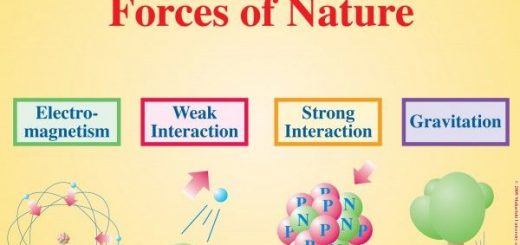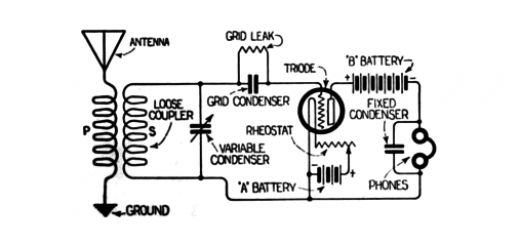Properties of the alternating current, Hot wire ammeter uses, cons and pros
AC dynamo generates an alternating current which its intensity increases from zero to maximum value then drops to zero again in the first half cycle, next to that, the current direction is reversed and its intensity goes from zero to maximum and drops back to zero through the second half cycle.
Alternating current
The alternating current is represented graphically by a sine wave form because the electric current intensity (I) and the electromotive force (V) vary their values and direction based on the following relation:
I = Imax sin θ
V = Vmax sin θ
The alternating current is the current that its intensity changes periodically with time from zero to maximum value then back to zero within the first half cycle then its direction is reversed and its intensity goes from zero to maximum and drops back to zero through the second half cycle and this variation is typically repeated each cycle.
The electric current takes time to complete one vibration, called the periodic time (T), It makes several complete vibrations every second, called frequency (f), The Periodic time of the AC current (T) is the time taken by the alternating current to make one complete cycle, T = 1 / f.
The frequency of the alternating current (f) is the number of complete cycles made by the AC current in one second, The frequency of the alternating current changes from country to another, in Egypt the frequency is 50 HZ.
When the frequency of the alternating current is 50 Hz, It means that the number of complete cycles made by the AC current in one second = 50 cycles.
Properties of the alternating current
- Its voltage can be stepped up or down as needed using electric transformers.
- Electrical power of alternating current can be transmitted efficiently through power lines over long distances from the power plant to the consumer, minimizing power loss using transformers.
- It can be (rectified) converted into direct current.
- The AC current can be used for some processes such as lightning and heating but it would not be an appropriate choice in others such as electrolysis and electroplating.
- It has a thermal effect when it passes through an ohmic resistance.
Hot wire ammeter
Moving coil ammeters are not valid to measure the value of the alternating current since it changes its intensity and direction continuously, where the idea of the moving coil ammeter is based on the stability of the intensity and direction of the magnetic field produced due to the flow of the DC current, Thus, the alternating current intensity is measured depending on its thermal effect through the hot wire ammeter.
The hot wire ammeter is a device used to measure AC or DC current intensity based on the thermal expansion of a wire made of platinum and iridium alloy that is heated due to the flow of electric current through it.
Hot wire ammeter is used in measuring the effective value of the alternating current and measuring DC current intensity Because its working idea is based on the thermal effect of the electric current that is independent of the current direction.
The idea of operation depends on the thermal effect of the electric current when electric current (AC or DC) passes in an ohmic resistance amount of heat is generated, its value depends on the effective value of the electric current intensity.
Structure of hot wire ammeter
- A thin wire of platinum and iridium alloy is stretched tightly between two ends A and B.
- A silk thread is permanently connected at the middle of the thin wire AB and wound once around a pulley (P) that can rotate about its axis.
- The thread is anchored at the other end (S) to a spring fixed at the other end.
- A pointer mounted to the pulley moves along a non-uniform scale.
- A small resistance is connected in parallel to the wire AB as a shunt used as a current divider.
Operation of hot wire ammeter
The hot wire ammeter is connected in series in the circuit which is required to measure the AC current passing through it, When the current to be measured passes through the instrument, the wire AB expands, consequently the tension in the wire decreases (loosen).
The silk wire pulls the hot wire, thus the pulley rotates and the pointer deflects along the scale, The reading is taken when the pointer stops at a definite reading when the rate of heat generated in the wire equals the rate of heat lost of it.
The pointer reading indicates the effective value of the AC current, When the current is cut from the ammeter, the wire cools down and contracts pulling the silk thread returning the pointer back to the zero position.
Disadvantages of hot wire ammeter
- Slow pointer deflection on passing the current and slow revert to zero when the ammeter is disconnected from the circuit.
- The platinum and iridium wire is affected by changes in atmospheric temperature that may lead to a zero error in measurement.
To overcome this defect the wire is stretched on a plate made of a metal having the same expansion coefficient of the wire but isolated from it.
Method of calibration: It is calibrated by comparing it to moving coil galvanometer when they are connected together in series in a DC circuit.
The stretched wire between screws A, B is made of platinum and iridium alloy to expand considerably when heated due to the flow of electric current, The hot wire ammeter can measure both the AC and DC currents because the thermal effect of the electric current does not depend on the current direction.
The scale of the hot wire ammeter is non-uniform but its divisions increase as the electric current increases because the heat quantity generated in the wire is directly proportional to the square the electric current intensity passing through (I²), This means that if the current is doubled the generated heat increases four times.
A hot wire ammeter depends on the thermal effect of electric current, It is used in measuring the DC current and the effective value of the AC current, measuring scale is non-uniform, Its reading is affected by the surrounding atmospheric temperature, The pointer moves slowly when connected to or disconnected from the electric current.
Moving coil ammeter depends on the magnetic effect of electric current, It is used in measuring the DC current only, measuring scale is uniform, Its reading is not affected by the surrounding atmospheric temperature, The pointer moves fast when connected to or disconnected from the electric current.
Alternating current is obtained by AC dynamo, It is variable in intensity and direction, It can be transmitted for long distances without a big loss in energy by raising its potential using transformers, It can be converted into DC current, It is measured by hot wire ammeter, It is used in lighting and heating.
Direct current is obtained by DC dynamo, Electric cells and car batteries, It has constant intensity and direction, It can not be transmitted for long distances as it loses a big amount of energy in the form of heat energy, It can not be converted into AC current, It is measured by hot wire ammeter and moving coil ammeter, It is used in lighting, heating, electrolysis and charging batteries.
DC motor uses, structure & How to increase the efficiency of rotation of electric motor



